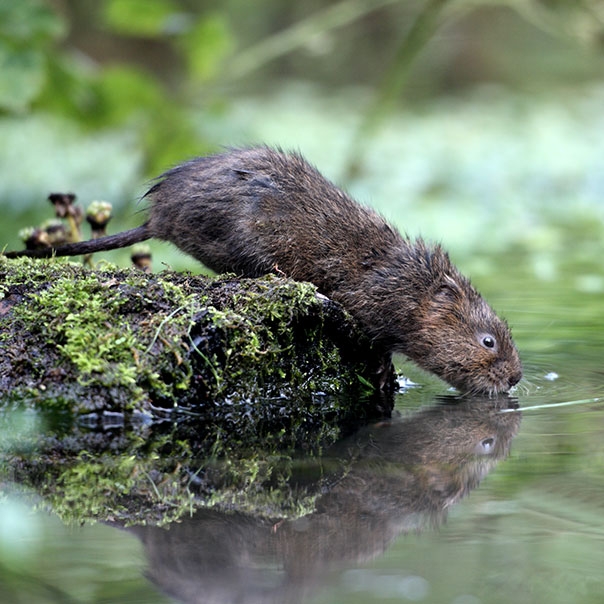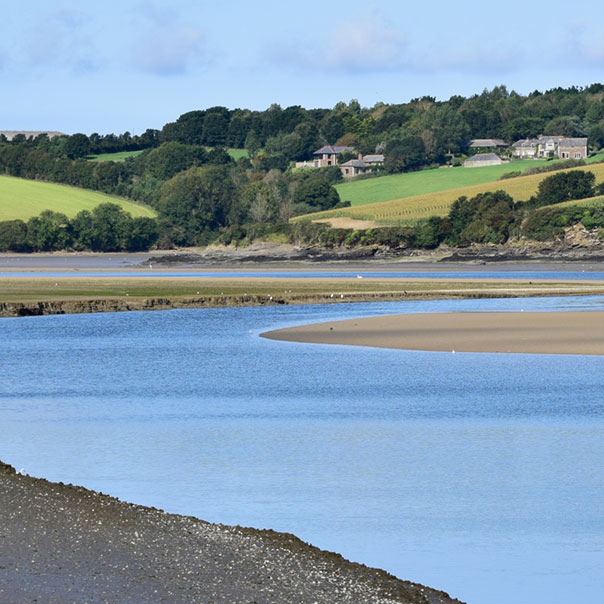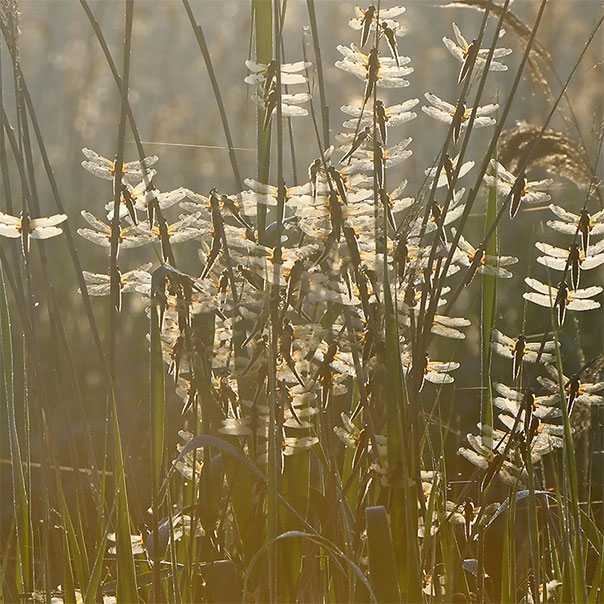Gulls and terns found in UK wetlands
Gulls are commonly seen on wetlands, even in urban areas, and are familiar to many of us. Most species breed in large colonies near water, nesting amongst vegetation or even on rooftops. Outside the breeding season, many gulls move inland, roosting on reservoirs and feeding in agricultural fields or rubbish tips.
Terns are small and slender compared to the gulls and are elegant flyers, often seen hovering then plunging into the water to catch prey. Like gulls, they nest in colonies, often in freshwater habitats.
Small gulls
Black-headed gull
(Chroicocephalus ridibundus)
Broadly resident in the UK, where they breed in large colonies, usually on freshwater lake islands. Numbers swell in winter from birds escaping the colder parts of Europe.
Look closely in good light at their breeding plumage and you’ll see that their black head is in fact brown. They’re the UK’s only gull to have a white leading edge to the wing, easily identifiable in flight. In non-breeding plumage, they lose the black hood and sport a black ear spot. Look for a thin, red bill (black-tipped in non-breeding plumage) light-grey wings and back. When stood with wings folded, the black wingtip feathers are always visible above the tail feathers.
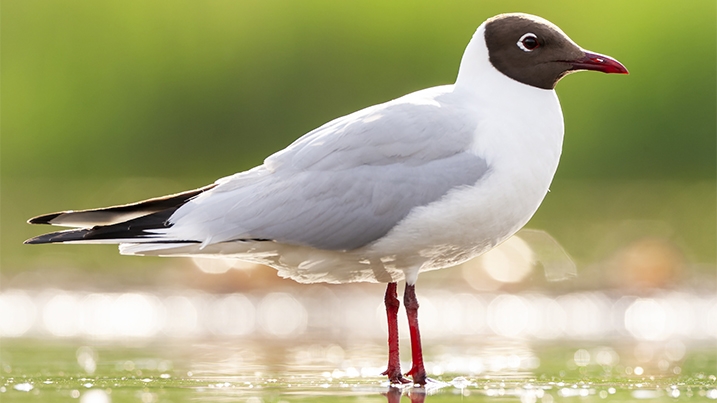
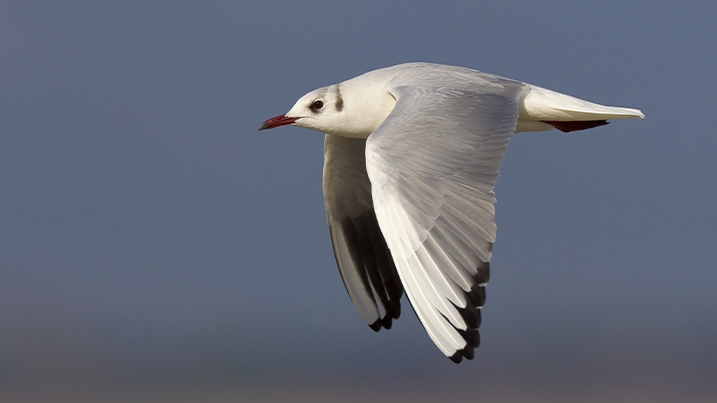
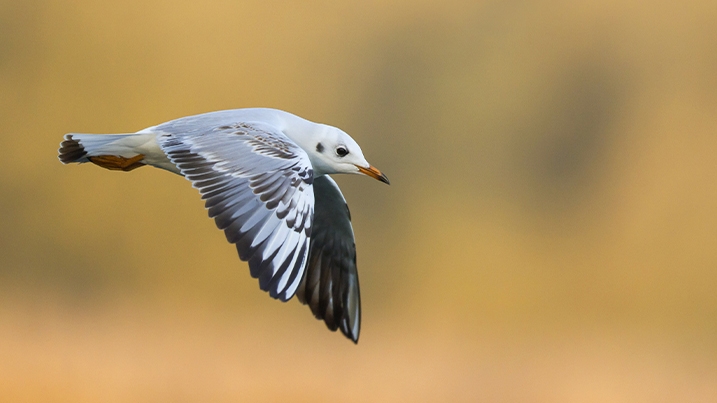
Mediterranean gull
(Ichthyaetus melanocephalus)
A rare but increasing breeder in the UK, mostly in southern England, often amongst colonies of black-headed gull. Continental breeders also spend the winter around our coasts.
Compared to the similar black-headed gull, their hood in breeding plumage is fully black. In flight, their wings are slightly shorter and broader, the adults having all-white wing plumage and at rest, very pale upperparts. They sport a brighter red bill and legs, too. In non-breeding plumage, the hood is lost, but dark markings remain more prevalent than in black-headed gull, going through the eye instead of only behind it. When stood with wings folded, the white wingtip feathers are visible above the tail feathers in the adults.
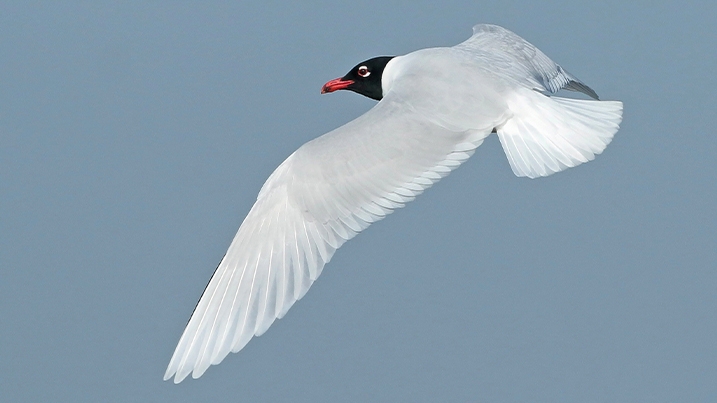
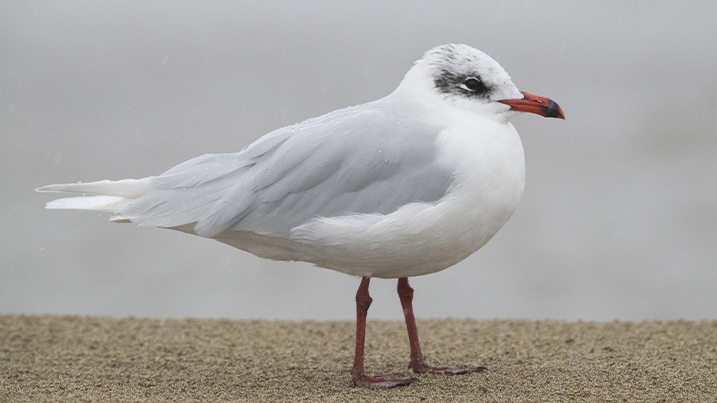
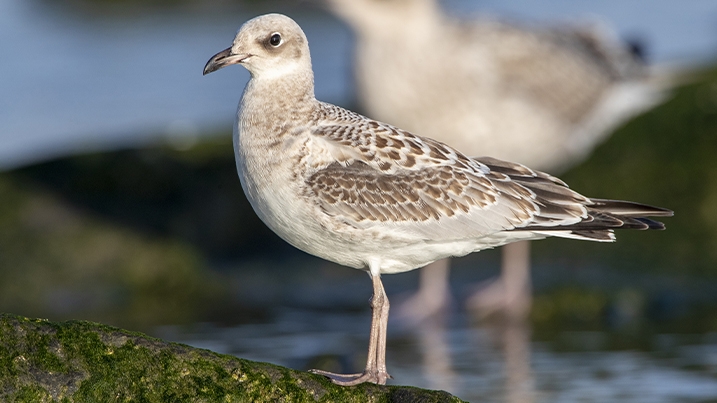
Little gull
(Hydrocoloeus minutus)
Breeding across north-east Europe and wintering at sea in the west and south, these dainty gulls are most usually seen on migration when they cross over land and drop into freshwater wetlands.
Smaller than black-headed gull, adults in breeding plumage sport a black hood and bill, near-black underwing and pale-grey upperwing. The hood is lost in non-breeding plumage, replaced with a dark ear patch and cap.
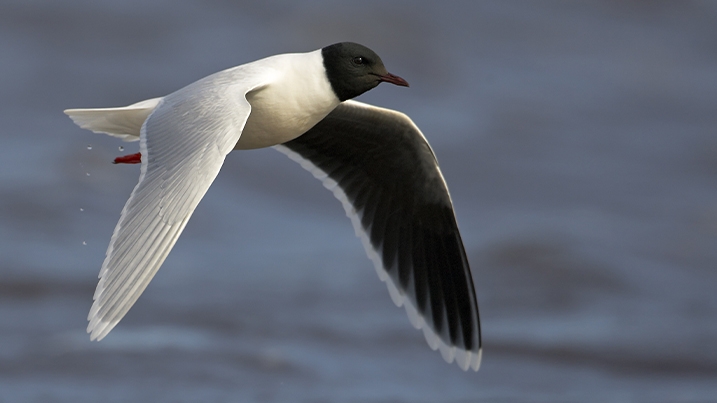
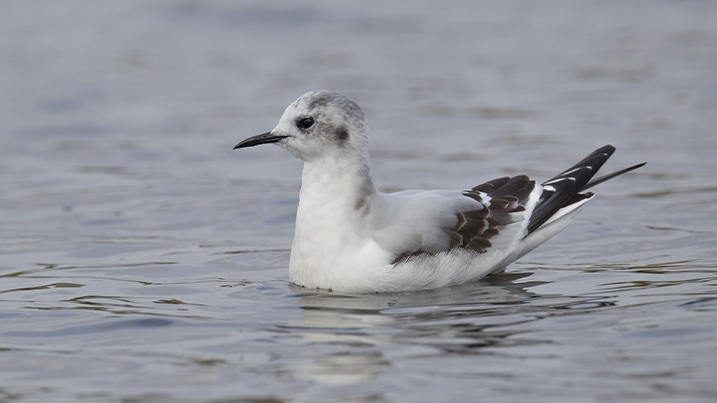
Common gull
(Larus canus)
Resident in the north of the UK, with birds in the south migrating to Scotland to breed. Larger than black-headed gull but smaller than herring gull (see below); common gull has grey wings and back, a rounded head, thin bill, yellow-green legs and a dark eye. In non-breeding plumage, the head develops grey streaking and a dark, thin band around the bill.
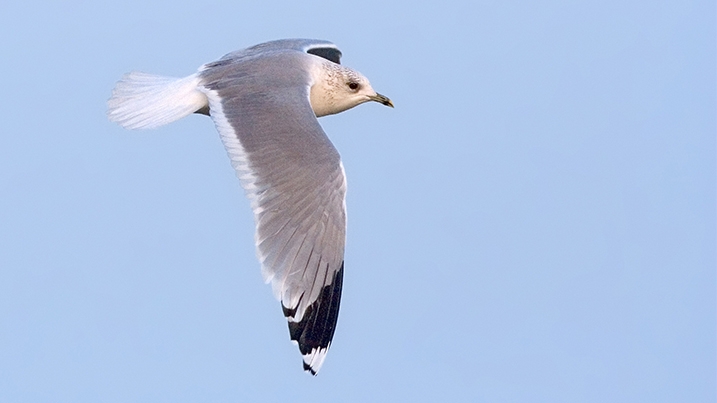
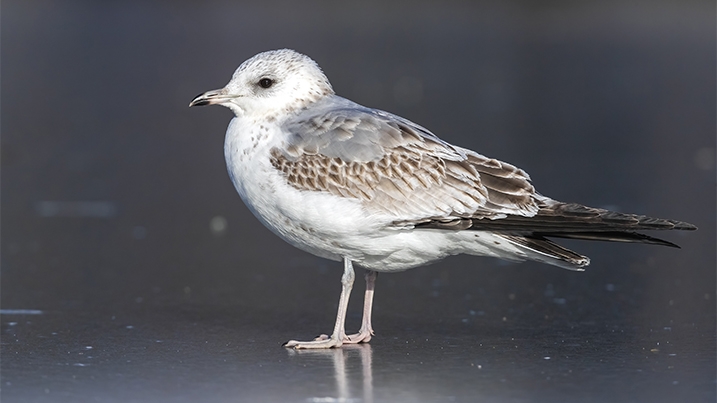
Large gulls
Herring gull
(Larus argentatus)
Resident throughout much of the UK, some move to spend the winter further inland.
Adults show grey wings and back, with pink legs and yellow/red bill. Non-breeding adults show head streaking.
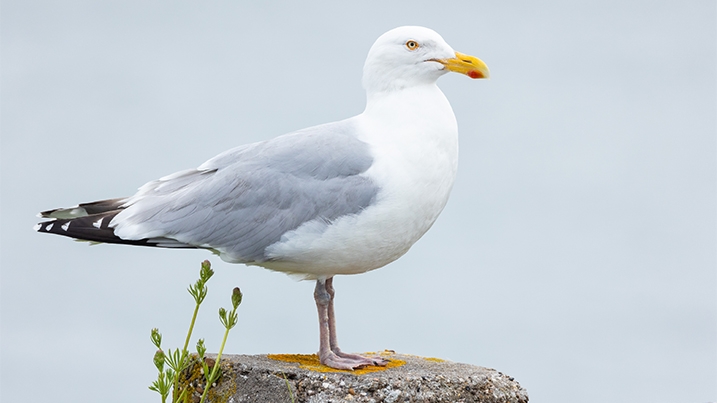
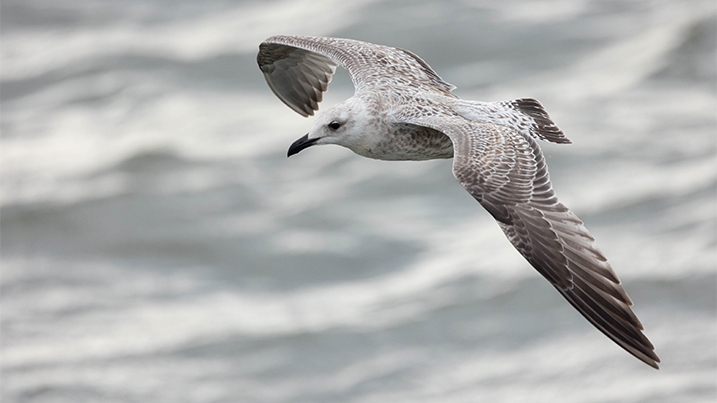
Great black-backed gull
(Larus marinus)
Largely resident across western areas of the UK, with influxes of continental birds in the winter. This is the largest gull in the world, and an opportunistic omnivore that is known to eat anything it can swallow, including other birds and small mammals.
Look out for an overall strongly built gull, with a very heavy, yellow/red bill. They have dull pink legs and the grey-black back is the same colour as the broad wings, with a white margin in flight.
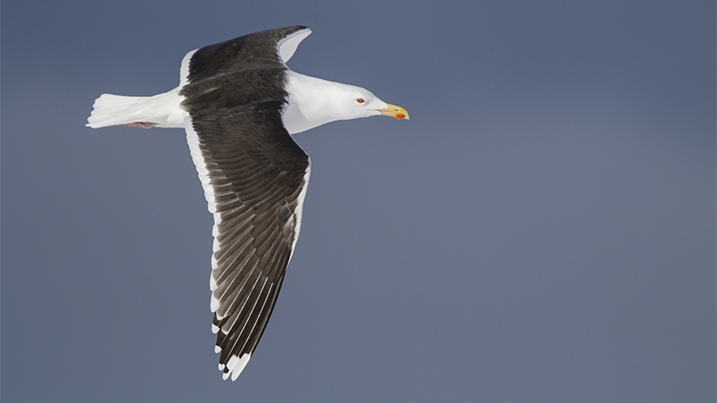
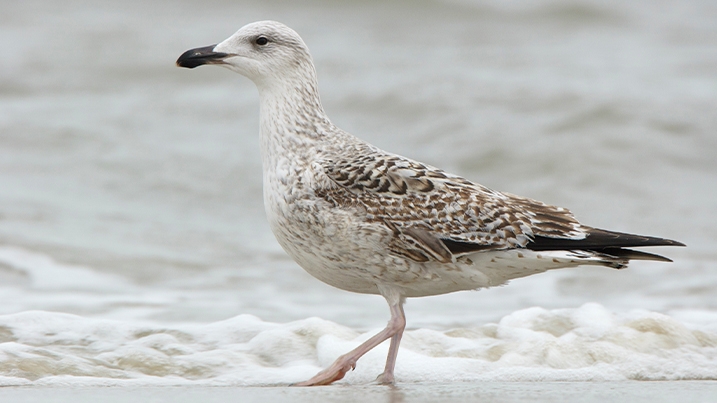
Lesser black-backed gull
(Larus fuscus graellsii)
Resident around much of the UK’s coasts, moving inland to winter. In Scotland, they are only present in the breeding season.
Slightly smaller than the herring gull, they have yellow legs whilst colouration on the wings and back is slate-grey, contrasting with black wing tips (a good way to separate them from great-black backed gull) . In non-breeding plumage, grey streaking develops on the head.
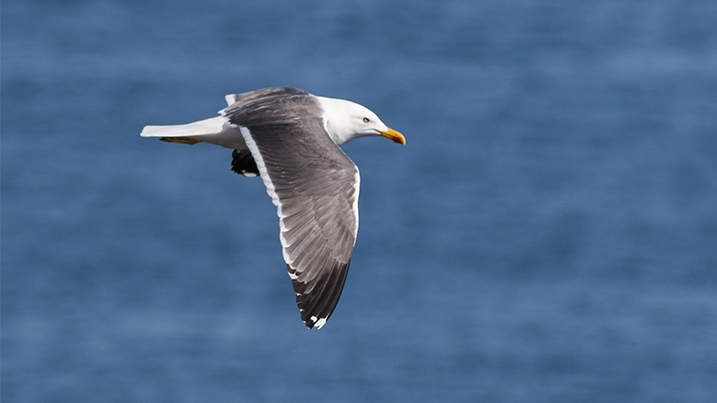
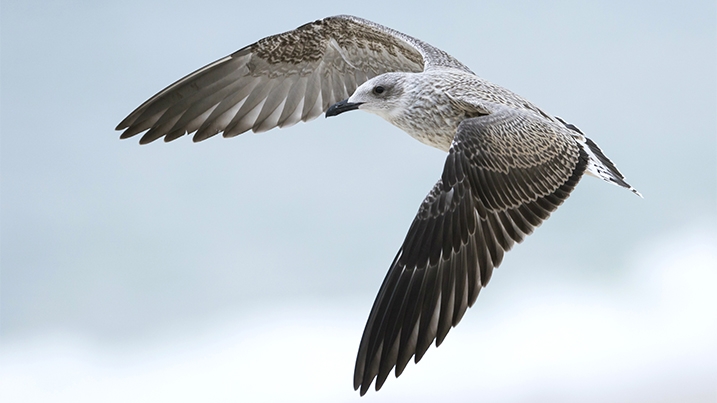
Terns
Sandwich tern
(Thalasseus sandvicensis)
Breeding in coastal areas throughout Europe, they are uncommon inland, but can be seen particularly in spring and autumn, in estuaries and occasionally at inland freshwater sites. They move south to winter in southern Europe and Africa.
The UK’s largest regularly occurring tern, look out for a shaggy black crest and long, dark bill, tipped yellow in an adult bird.
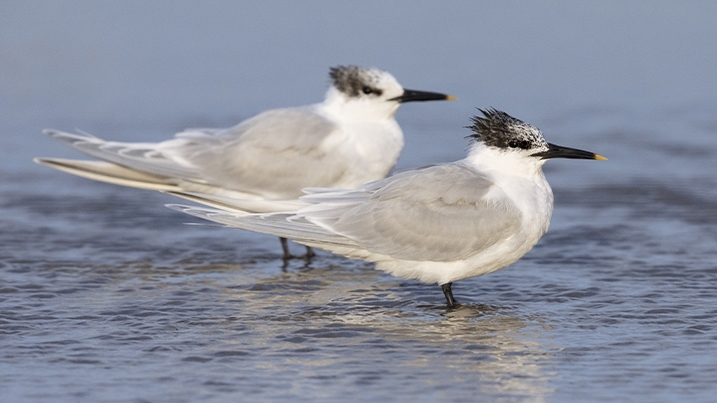
Common tern
(Sterna hirundo)
Breeding across much of Europe, these are summer visitors, migrating to spend the winter around African coasts.
They have a slightly decurved bill (orange-red with a black tip in breeding plumage). At rest, their shorter tail streamers do not extend further than the wing tip.
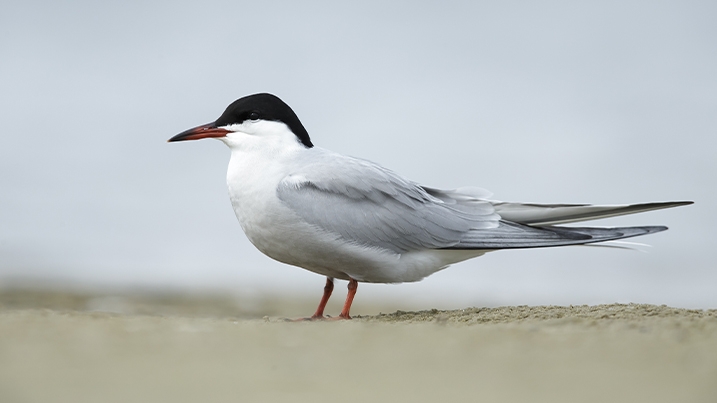
Arctic tern
(Sterna paradisaea)
Breeding across much of northern Europe, these are summer visitors, migrating to spend the other six months of the year around the coasts of Antarctica; the longest migration of any bird.
Compared to common tern, they are smaller, with a short, straight, dark red bill. They have a longer tail, shorter legs and slightly narrower wings. Their flight is bouncier and at rest, their longer tail streamers extend further than the wing tips.
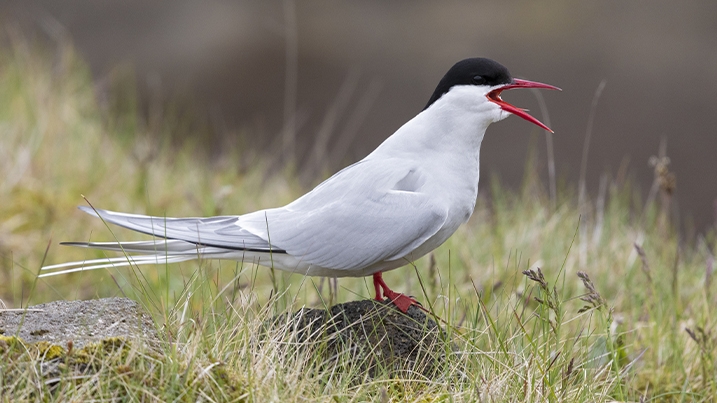
Little tern
(Sternula albifrons)
Breeding in coastal areas throughout Europe, they move to winter along the coasts of Africa, Arabia and India. Uncommon inland, but can be seen particularly in spring and autumn, in estuaries and occasionally at inland freshwater sites.
The UK’s smallest tern (half the size of common tern), look out for rapid wingbeats, short, orange legs, a black cap, a white forehead, and a yellow bill with black tip.
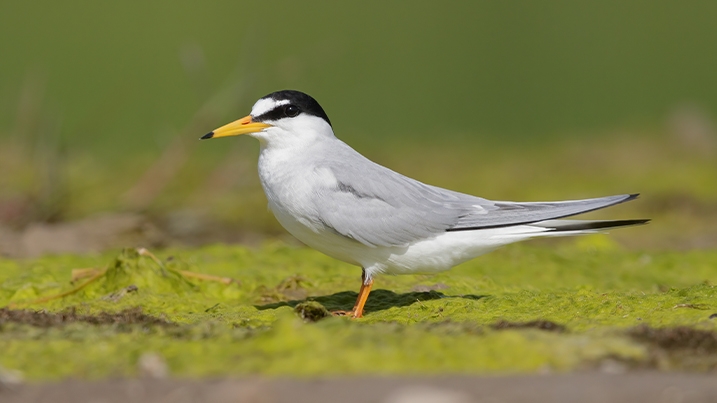
Black tern
(Chlidonias niger)
A former UK breeder, lost due to historical drainage of wetlands. They’re now a summer visitor to much of Europe, being seen in the UK when easterly winds blow them off-course on migration to inland wetlands. They winter on the coasts of Africa.
Black terns have shorter and broader wings, with a shorter tail than the other terns described above. Breeding adult plumage is a plain grey, with black head, bill and belly. By the end of summer, face and belly are white, with just a black cap. They don’t dive for fish unlike other terns, but feed on the wing picking up prey at the water’s surface or in the air.
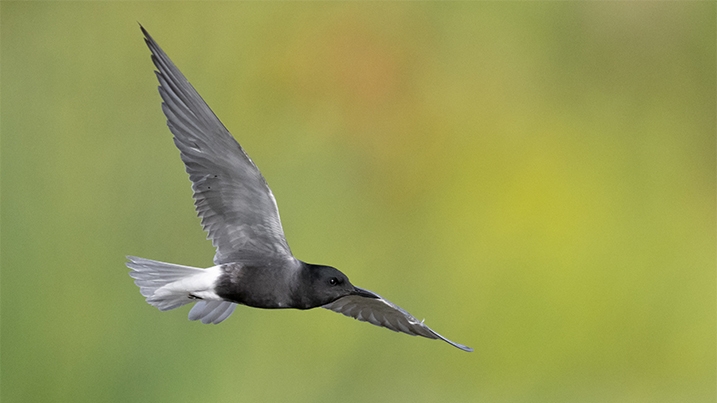
My gull or tern doesn’t look like any of the above…
…then it’s probably in an immature plumage. Adults are easier to identify so we’ve focused on them here, whilst including a few images of birds in younger plumage for comparison. These will show a combination of adult and juvenile features that can make things difficult. The larger gulls take longer to mature, with a series of moults that can mean they take up to four years to show full adult plumage.
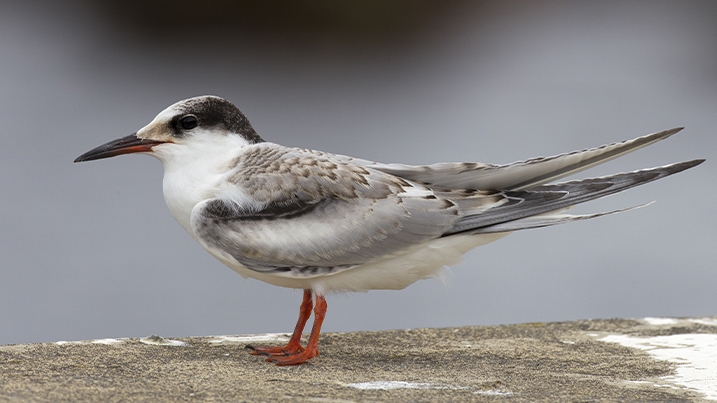
Threats to these species and how WWT are helping
For hundreds of years, UK wetlands have been drained for agriculture, resulting in a loss of habitat for many species. We’re working to restore wetlands on a national scale, and you can help with our campaign for 100,000 hectares of new wetlands. Gulls and terns are adaptable species, simply needing good nesting and roosting sites as well as a plentiful food supply to thrive.
If you're keen to spot gulls and terns, WWT wetlands sites are a good place to start.
Find your nearest WWT site